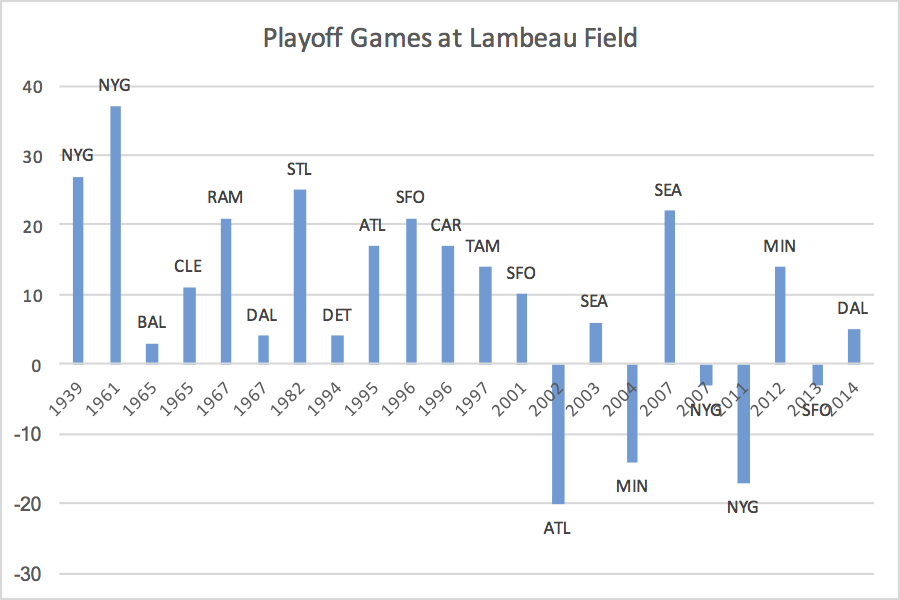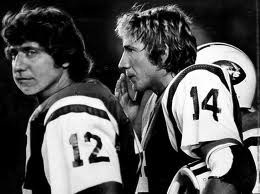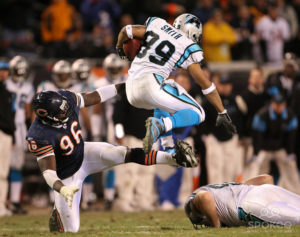Would the Atlanta Falcons be the worst franchise to win the Super Bowl? The Falcons have a franchise regular season record of 341-437-6, which translates to a 0.439 winning percentage.
In 51 years, the Falcons have made the playoffs just 13 times. Atlanta didn’t record back-to-back winning seasons as a franchise until Matt Ryan arrived; the team had five straight years with a winning record, but hasn’t had repeated the feat since (next year, perhaps). Atlanta has never led the NFL in offense; it hadn’t led the league in scoring until this year. It only led the league in points allowed one time, the historic ’77 team, but has never finished first in yards allowed.
In short, this is not a good franchise. It may be one of the three worst franchises to ever win a Super Bowl, yet it may still be the best franchise from the NFC South to ever pull off that feat. Here are my rankings of the worst franchises to win a Super Bowl.
5) 2001 Patriots: Sure, it’s easy to think of New England as one of the best franchises in the league. But 15 years ago? Not so much. New England had a 291-328-9 record (0.471), 37 games below .500, when the team won its first Lombardi Trophy. The franchise had been on the rebound from the ugly days of the early ’90s, but the franchise’s history was mostly bad, even when the team was good (see: Super Bowl XX).
4) 1974 Steelers: Another team that used its first Super Bowl victory as the birth of a dynasty. But Pittsburgh was 199-280-19 (0.419) at the conclusion of the 1974 regular season; at 81 games below 0.500, this was a bad franchise. In the ’50s and ’60s, the Steelers had the second most losses of any team in the NFL. That all changed once Chuck Noll came to town, and quickly turned the Steelers into the team of the ’70s.
3) 2016 Falcons, with a win: Atlanta is currently an underdog in Super Bowl LI, but this feels like the appropriate slot for the team. At 96 games below .500 and with a 0.439 winning percentage, this is a bad franchise. Under Rankin Smith, Atlanta went 129-218-5 in the team’s first 24 years of existence, with just one playoff victory. He handed the keys to the organization to his son, Taylor, in 1990; Atlanta won a playoff game in ’91 and then two more in 1998, culminating in the team’s only Super Bowl appearance prior to this year. Still, three playoff wins and an 83-109 record in 12 years wasn’t much better.
The team was sold to Arthur Blank in 2002, and the Falcons have been good under Blank in large part because the team landed Michael Vick and then Matt Ryan. The Falcons are 129-110-1 in the Blank years, with a 5-6 playoff record. Perhaps most impressive: in 15 years, Atlanta has had a losing season just five times.
2) 2009 Saints: New Orleans was a whopping 103 games below .500 after the 2009 season, courtesy of a 275-378-5 record (0.422). This was a bad, bad franchise: under founding owner John Mecom Jr., the team went 78-176-5 in 18 years without a single playoff appearance! Tom Benson took over in 1985, but the Saints didn’t win their first playoff game until 2000! Entering the ’09 playoffs, the franchise had just two playoff wins, but won three that year to capture the team’s sole Lombardi Trophy.
1) 2002 Bucs: Tampa Bay had a 0.382 winning percentage at the end of the 2002 regular season, and stood at 99 games below 0.500 with a 160-259-1 franchise mark. This team was called the “Yucks” for a reason: from Hugh Culverhouse was the team’s original owner, and the franchise famously lost its first 26 games. Culverhouse died after 18 years, and Tampa Bay had won just a single playoff game during his time; overall the Bucs were 81-194-1, easily the worst franchise in the NFL over that period.
In 1994, the Bucs went 6-10 without a true owner; the Culverhouse estate sold the team to Malcolm Glazer, who had a pretty nice start. His first two draft picks were Warren Sapp and Derrick Brooks, and the team soon turned from laughingstock to contender once Tony Dungy came on board in 1996. Glazer controversially fired Dungy and traded two first-rounders, two second-rounders, and $8 million for Jon Gruden, but the moved proved to be an immediate (if not necessarily long-term) success: the Bucs won the Super Bowl in ’02, the first year under Gruden.





